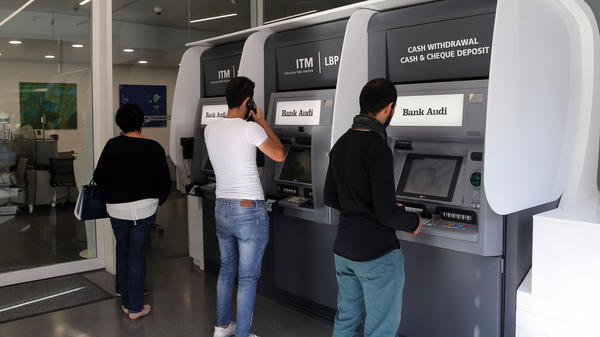The recent bank consolidations in the Middle East hit a new peak in 2020, with the announcement of the merger between Saudi Arabia’s National Commercial Bank (NCB) and Samba Financial Group. The deal, which brings together the country’s third and sixth largest lenders by assets, will maintain the new entity’s position as the Middle East’s third largest lender by assets and make it the region’s largest lender by Tier 1 capital.
This merger is the culmination of a series of consolidations within the region over the past five years. In the face of a significant drop in oil revenues over that period, governments across the Gulf Co-operation Council (GCC) have trimmed spending, and encouraged synergies and partnerships among banks and across the wider public sector.
“The first wave [of consolidation] was driven by shareholders’ desire to reorganise their assets, [and] we consider the merger between NCB and Samba as the last transaction of this wave,” says Mohamed Damak, senior director and sector lead for financial institutions in the Middle East and Africa at S&P Global.
Yet pressures on lenders’ profitability and asset quality brought about by the Covid-19 pandemic may prompt further deals going forward. “A second wave of mergers and acquisitions (M&As) could start when the full impact of the weaker operating environment on banks becomes apparent,” he says.
Slew of M&A deals
NCB’s SR55.7bn ($14.8bn) acquisition of Samba, agreed by both banks in October, was easily the largest of the 22 M&A deals in the Middle East in 2020 compiled by Mergermarket. The deal is scheduled for completion during the second quarter of the year.
NCB and Samba’s combination will create the undisputed national champion... and arguably the most competitively advantaged
The new entity will have combined assets of about SR837bn with a domestic market share of loans and deposits of about 25% and 28% respectively, according to Fitch Ratings.
“NCB and Samba’s combination will create the undisputed national champion of banking in the [country], and arguably the most competitively advantaged,” said Bank of America in a February 2021 research note. “The deal harbours strong strategic rationale in our view, with the potential to create significant shareholder value via cost and revenue synergies.”
NCB’s acquisition of Samba is just the second banking merger in Saudi Arabia in recent decades, following on the tails of Saudi British Bank’s (SABB’s) takeover of Alawwal Bank, finalised in 2019.
Saudi Arabia’s new national bank
The creation of the new mega-lender is inextricably linked with the country’s ambitious Vision 2030 economic and social reform drive, spearheaded by crown prince Mohammed bin Salman bin Abdulaziz Al Saud. The Public Investment Fund (PIF), the country’s high-profile sovereign wealth fund, is a major shareholder in both banks, holding a 44.29% stake in NCB and a 22.91% stake in Samba.
Any doubts about the ambition for the new lender were dispelled in early February, with the announcement that it would be renamed “Saudi National Bank”. The proposed name “embodies the goal of the merged entity of becoming the new banking champion for Saudi Arabia,” said Samba’s chairman Ammar Abdulwahid Alkhudairy in a statement.
“Our aspiration is that this merger will create a trusted partner for companies and institutions; a backbone for the mega-projects that are transforming our nation; and a destination for the best industry talent,” he said.
The formation of the new bank coincides with reforms that make support for Saudi Arabia’s economic growth a formal part of the Saudi Central Bank’s (SAMA’s)’s mandate, with the body now directly accountable to the king. SAMA transferred $40bn from its foreign exchange reserves in May 2020 to the PIF to boost the latter’s investment plans, which include overseas investments, new industries and large modernisation projects within the kingdom.
The tie-up with Samba is NCB’s second attempt at a mega-merger; the bank had previously been in discussions with the country’s third largest lender, Riyad Bank, before talks ended in December 2019.
Elsewhere in the GCC
The creation of a national champion lender in Saudi follows similar moves in the United Arab Emirates (UAE). Dubai was the original pioneer in 2007, with the merger of Emirates Bank and National Bank of Dubai to create Emirates NBD, now the region’s third largest lender by assets.
Yet it was the creation in 2016 of First Abu Dhabi Bank (FAB), via the merger of National Bank of Abu Dhabi and First National Bank, that kickstarted the current wave of consolidation across the region. As with NCB and Samba, the merger of the two Abu Dhabi-based giants was in part facilitated by the government-owned Abu Dhabi Investment Council being a common shareholder in both institutions.
Another 2020 deal was the completion of Abu Dhabi Commercial Bank’s three-way tie-up with Union National Bank and Al Hilal Bank, first announced in early 2019. Consolidation has also been seen in the UAE’s Islamic banking sector, with the merger between Dubai Islamic Bank and Dubai-based rival Noor Bank completed in January 2020, creating an Islamic lender with over $75bn in sharia-compliant assets.
Aside from the landmark NCB-Samba tie-up, 2020 also saw foreign banks trimming minority stakes in Saudi lenders. Reuters reported that NatWest Markets and Banco Santander sold a 1.5% stake in SABB, currently the country’s fourth largest lender, in September, for $200m.
That same month saw Crédit Agricole divest its remaining 4% stake in Banque Saudi Fransi to unnamed Saudi government entities for SR1.45bn, completing a divestment process it began in 2017. The French bank insists that it remains committed to Saudi Arabia, and has applied for a licence enabling it to operate in the country’s capital markets.
Qatar joins the party
Like Saudi Arabia, neighbouring Qatar has been slow to witness consolidation within its banking sector. This is perhaps unsurprising given the presence of a clear domestic and international banking champion in the form of Qatar National Bank, the region’s largest lender for three of the past four years.
Yet the country saw the completion of its first ever bank merger in 2019, with the coming together of two of the country’s smaller lenders, Barwa Bank and International Bank of Qatar. This is set to be followed this year by the acquisition of Al Khalij Commercial Bank by Masraf Al Rayyan, the country’s second largest Islamic lender, following an announcement by the two banks in January 2021.
“Further Qatari bank mergers could generate cost synergies that alleviate pressure on profitability from compressed financing margins and higher loan impairment charges due to the pandemic,” said Fitch Ratings in a February note, following the announcement. “Mergers can also increase banks’ asset quality risks from collateral valuations, changes in loan classification policies and building provisions against purchased credit-impaired assets.”
Further Qatari bank mergers could generate cost synergies that alleviate pressure on profitability... due to the pandemic
Kuwait Finance House’s (KFH’s) long-gestating acquisition of Ahli United Bank (AUB) of Bahrain remains in limbo at time of writing. The landmark deal — the first significant cross-border M&A in the Middle East in decades — was formally approved by shareholders of the two institutions in January 2020, paving the way for the creation of a regional giant with over $100bn-worth of assets.
Yet the two institutions announced a formal delay to proceedings just three months later, in the midst of the coronavirus pandemic. Local press reported in May that the Central Bank of Kuwait requested that KFH conduct a comprehensive reassessment of its AUB acquisition once the impact of Covid-19 has subsided. KFH announced a fresh delay to proceedings in December.
In early 2020, fellow Kuwaiti lender, Boubyan Bank, upped its stake in UK-based lender BLME to 100%, acquiring the 72% stake it did not own for around $158m. Burgan Bank, Kuwait’s third largest bank by assets, announced the sale of its 51.8% stake in Iraq’s Bank of Baghdad to Bahrain’s United Gulf Holding, without disclosing the value of the transaction.
Feeling the effect of Covid
While the first wave of banking consolidation within the GCC was prompted largely by a reorganisation of assets in the wake of lower oil prices, it remains to be seen as to whether the economic shock of the pandemic will prompt a new round of deals.
“In our view, a second wave of M&As could start when the full impact of the weaker operating environment on banks becomes apparent,” says Mr Damak. “This would require more aggressive moves by management than we have seen in the past.”
Pressure on lenders has become particularly acute in Bahrain and Oman, the GCC’s smallest oil producers. “Despite high capital buffers and liquidity, [Oman’s] banks face headwinds from the impact of the pandemic on asset quality, a low-oil environment, and high credit and deposit concentration,” the International Monetary Fund (IMF) said in its most recent Article IV staff report from February 2021.
Oman Arab Bank, one of the country’s smallest lenders, completed a merger with Alizz Islamic Bank in June 2020, creating a lender with more than $8bn in assets. In Bahrain, the National Bank of Bahrain raised its stake in Bahrain Islamic Bank from 29% to 78.8% in January 2020.
Lebanese banks under pressure
Yet nowhere in the region was pressure on lenders felt greater in 2020 than in Lebanon, as the country’s ongoing financial crisis and pressure from Covid-19 saw gross domestic product fall by 25% during the year — its worst annual fall since the civil war of the 1980s, according to the IMF.
The task for banks has become further complicated by several new capital requirements introduced by two circulars issued by the country’s central bank in August.
“If you add [up] all the requirements in the two circulars, as well as the lack of visibility, the absence for nearly six months of a functioning government, the suspension of discussions with the IMF and lack of outlook on reforms, then the task of banks becomes more challenging,” says Nassib Ghobril, chief economist at Lebanon’s Byblos Bank.
Some of the country’s larger banks have begun to sell off overseas assets in a bid to meet the new requirements. December 2020 saw Bank Audi, the country’s largest bank by assets, sell its operations in Jordan and Iraq to Jordan’s Capital Bank Group for an undisclosed sum. The same month, Lebanon’s Daily Star reported that Banque Saudi Fransi had bought the remaining 47% shares of Bank Audi’s subsidiary in Syria for around $25m.
A month later, Bank Audi announced a deal to sell its Egyptian operations to the UAE’s FAB for an undisclosed sum. The same month saw Lebanon’s Blom Bank sell its operations in Egypt to Bahrain’s Bank ABC for $480m.
The strains faced by Lebanese lenders has inevitably led to speculation about potential mergers among the lenders, which may be hastened by the central bank’s new requirements. “[The central bank] has stated repeatedly that in cases where there are banks that will not be able to meet the solvency, liquidity and capitalisation requirements of the two circulars, it will acquire the shares of these banks, restructure their management, maybe merge them together, and later on offer them for sale locally and internationally,” says Mr Ghobril.















